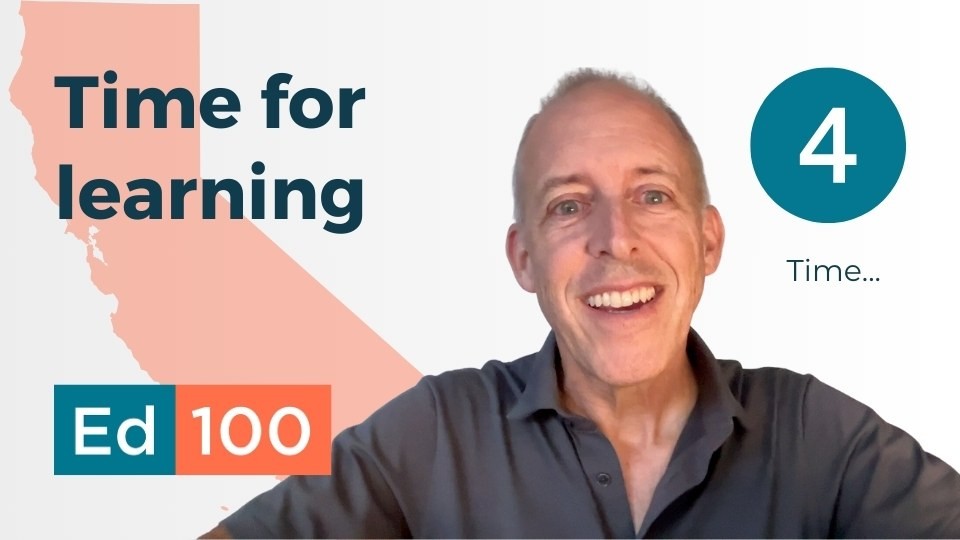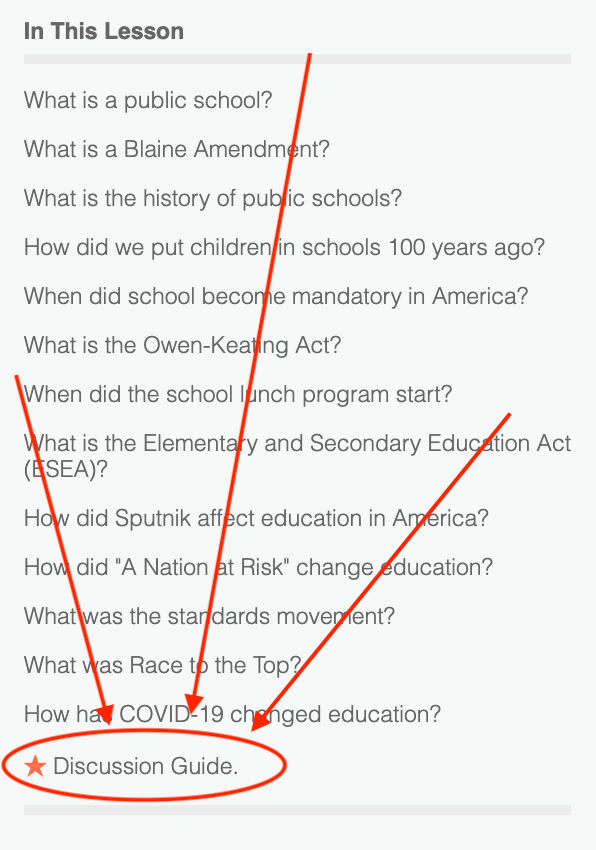Time and Education

Installment #4 of ten!
What’s the most precious investment in the education system? Not money — it’s time. When kids miss a day of learning, that day is gone. The clock only spins one way, and none of us can make it otherwise. Learning happens moment by moment when kids have their brains turned on, stretching toward the pleasure of understanding or mastery or achievement.
Each chapter in Ed100 takes an aspect of education and breaks it down. In Chapter 1 we set some baseline terms and reviewed history. In Chapter 2 we looked at students, including their challenges and identities. Chapter 3 looked at teachers, including how they are recruited, prepared and compensated. Chapter four focuses on time.
As always, the lessons in this chapter cover a lot of ground. Topics included in Chapter 4 include:
- When do kids start learning?
- Why is early education important, and how does it work in California and other states and countries?
- Kindergarten has been around for generations. Why is it so hard to add just a little more education time for pre-K?
- What should class sizes be thought of as an investment of time?
- Why don’t class sizes vary in size more than they do?
- How many hours in a school year?
- What’s a Carnegie unit?
- How much does public education cost per hour?
- How do teachers learn to spend time powerfully?
- How should school time be organized to be most productive?
- How do summer vacations make us more unequal? What can be done?
- Why are after school programs important — and vulnerable?
- A lot of kids miss a lot of school. Why does it matter, and what can be done?
The video below summarizes it all in less than seven minutes. Check it out and please share! It really helps.
What to expect from us
We will continue updating Ed100 Lessons and releasing summary videos like this on our YouTube channel over the coming months. Please tell friends to sign up on the Ed100 home page to receive our weekly email.
How to use these videos
School communities get the most out of Ed100 by using it together.
The big idea: Help communities get in the habit of talking and learning about the education system proactively, not just in response to tragedy or partisan provocation. It’s painless to add watching a video to the agenda of a PTA meeting or as a homework assignment for site council members.
For example, PTA leaders in Burbank used Ed100 to prepare their community in advance of a parcel tax proposal. Educators at CSU Monterey Bay are currently using Ed100 to help future educators learn about the education system they will work in.
Spark the conversation
Want to take this idea further? Each video in this series comes with a discussion guide, in English and Spanish. You can find it by looking for the orange star in the “In This Lesson” sidebar of each lesson (see image above).
To really go big, follow the example of Beacon Park Elementary, where a motivated parent spurred dozens of others to use Ed100 to become informed. The Ed100 Parent Leader Guide and drawing are tools to help groups build momentum.
Do you have other ideas about ways to put Ed100 to use in your community? Drop us a note!
Tags on this post
Time in school VideoAll Tags
A-G requirements Absences Accountability Accreditation Achievement gap Administrators After school Algebra API Arts Assessment At-risk students Attendance Beacon links Bilingual education Bonds Brain Brown Act Budgets Bullying Burbank Business Career Carol Dweck Categorical funds Catholic schools Certification CHAMP Change Character Education Chart Charter schools Civics Class size CMOs Collective bargaining College Common core Community schools Contest Continuous Improvement Cost of education Counselors Creativity Crossword CSBA CTA Dashboard Data Dialogue District boundaries Districts Diversity Drawing DREAM Act Dyslexia EACH Early childhood Economic growth EdPrezi EdSource EdTech Education foundations Effort Election English learners Equity ESSA Ethnic studies Ethnic studies Evaluation rubric Expanded Learning Facilities Fake News Federal Federal policy Funding Gifted Graduation rates Grit Health Help Wanted History Home schools Homeless students Homework Hours of opportunity Humanities Independence Day Indignation Infrastructure Initiatives International Jargon Khan Academy Kindergarten LCAP LCFF Leaderboard Leadership Learning Litigation Lobbyists Local control Local funding Local governance Lottery Magnet schools Map Math Media Mental Health Mindfulness Mindset Myth Myths NAEP National comparisons NCLB Nutrition Pandemic Parcel taxes Parent Engagement Parent Leader Guide Parents peanut butter Pedagogy Pensions personalized Philanthropy PISA Planning Policy Politics population Poverty Preschool Prezi Private schools Prize Project-based learning Prop 13 Prop 98 Property taxes PTA Purpose of education puzzle Quality Race Rating Schools Reading Recruiting teachers Reform Religious education Religious schools Research Retaining teachers Rigor School board School choice School Climate School Closures Science Serrano vs Priest Sex Ed Site Map Sleep Social-emotional learning Song Special ed Spending SPSA Standards Strike STRS Student motivation Student voice Success Suicide Summer Superintendent Suspensions Talent Teacher pay Teacher shortage Teachers Technology Technology in education Template Test scores Tests Time in school Time on task Trump Undocumented Unions Universal education Vaccination Values Vaping Video Volunteering Volunteers Vote Vouchers Winners Year in ReviewSharing is caring!
Password Reset
Search all lesson and blog content here.
Login with Email
We will send your Login Link to your email
address. Click on the link and you will be
logged into Ed100. No more passwords to
remember!
















Questions & Comments
To comment or reply, please sign in .
Genee Woodson January 19, 2024 at 4:34 pm
Jeff Camp - Founder January 19, 2024 at 6:24 pm